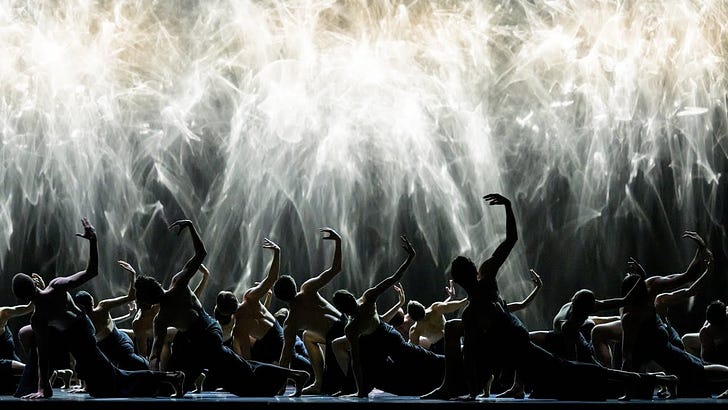A man in a good blue suit and a silk tie walked up to me before a performance last week and asked, “Are you the woman I’m waiting for?” He said he knew her name and had met her many times but he hadn’t seen her in years. By the end of the evening, I was asking the same question: Was this the National Ballet of Canada I was waiting for?
The troupe last performed in London 11 years ago, but I saw it initially in New York during the 1970s. Since its first artistic director, Celia Franca, stepped away in 1976, eight directors have put their mark on its development, starting with Alexander Grant. Drawing on his long association with the Royal Ballet, Grant brought Frederick Ashton’s work into the repertory and brought the company to Covent Garden—it was the first Canadian troupe ever to appear there. Now the former dancer Hope Muir, a Canadian, has taken charge, and she has proudly titled this program “Frontiers,” filling it with homegrown choreography.
It’s a risky choice, like arbitrarily deciding to stage three pieces made by redheads or insomniacs. By giving pride of place to native dancemakers, she waves the flag effectively but also squeezes her dancers’ range and individuality into the available material.
Of the 70 artists on the roster, 13 appeared in James Kudelka’s Passion, which opened the program weakly. Three “classical” couples—pointe shoes, filmy tutus—and one “contemporary” couple—a short velvet dress for her, a t-shirt and trousers for him—occupied the stage at the same time. Separated by a sinuous thread of five women weaving a simple walking path and gentle gestures through the action, the contrasting couples expressed their romantic passion simultaneously in their different stylistic ways.
If you watched one pair, you missed the other; if you watched the lovely ensemble, you missed the contrasting duets. Inevitably, no one received the complete attention they deserved.
Heather Ogden and Genevieve Penn Nabity, who took the principal women’s roles in Passion, had Emma Portner’s islands to themselves. Isolated in darkness by a block of white light, they wound themselves into a single creature like a mythical hydra or conjoined twins, sharing limbs and energy to propel and support one another.
In this fascinating realization of sympathetic symbiosis, every move seemed to engender the next, adding suspense to the creature’s evolution by raising questions about physical potential and human interaction.
Remember Emma Portner’s name. Unknown to me until now, she has worked in dance, theatre, pop music and television. She has appeared in a Justin Bieber music video and at the Guggenheim Museum. islands is her first ballet, created in 2021 for the Norwegian National Ballet, and incredibly, it holds its own against Crystal Pite’s massive Angels’ Atlas, which closed the evening with an overwhelming burst of emotion.
Having proved her talent time and again, especially for moving large groups to powerful effect and for welding dance to theatre, Pite is now in demand everywhere, and it’s easy to see why. Commissioned by this company in 2020, this piece involves 34 dancers, identically costumed in black trousers and apparently nude tops, who hurled themselves to the ground, at each other and into space as if inexorably compelled.
Intensely focused duets sliced through the ensemble’s surging patterns; artfully manipulated light splintered the dark landscape and rolling waves of grief and fury. Yet the dancers remained anonymous, indistinguishable units fused into a lonely crowd.
It’s always good to leave the public wanting more. I wanted more variety, more color—when will choreographers abandon black?—maybe a little humor, and a chance to know the performers better. Any professional troupe would happily acquire the latter two ballets and could dance them well. I’m still waiting to learn what makes this particular company distinctive, not when I first saw it, not 11 years ago, but now.

